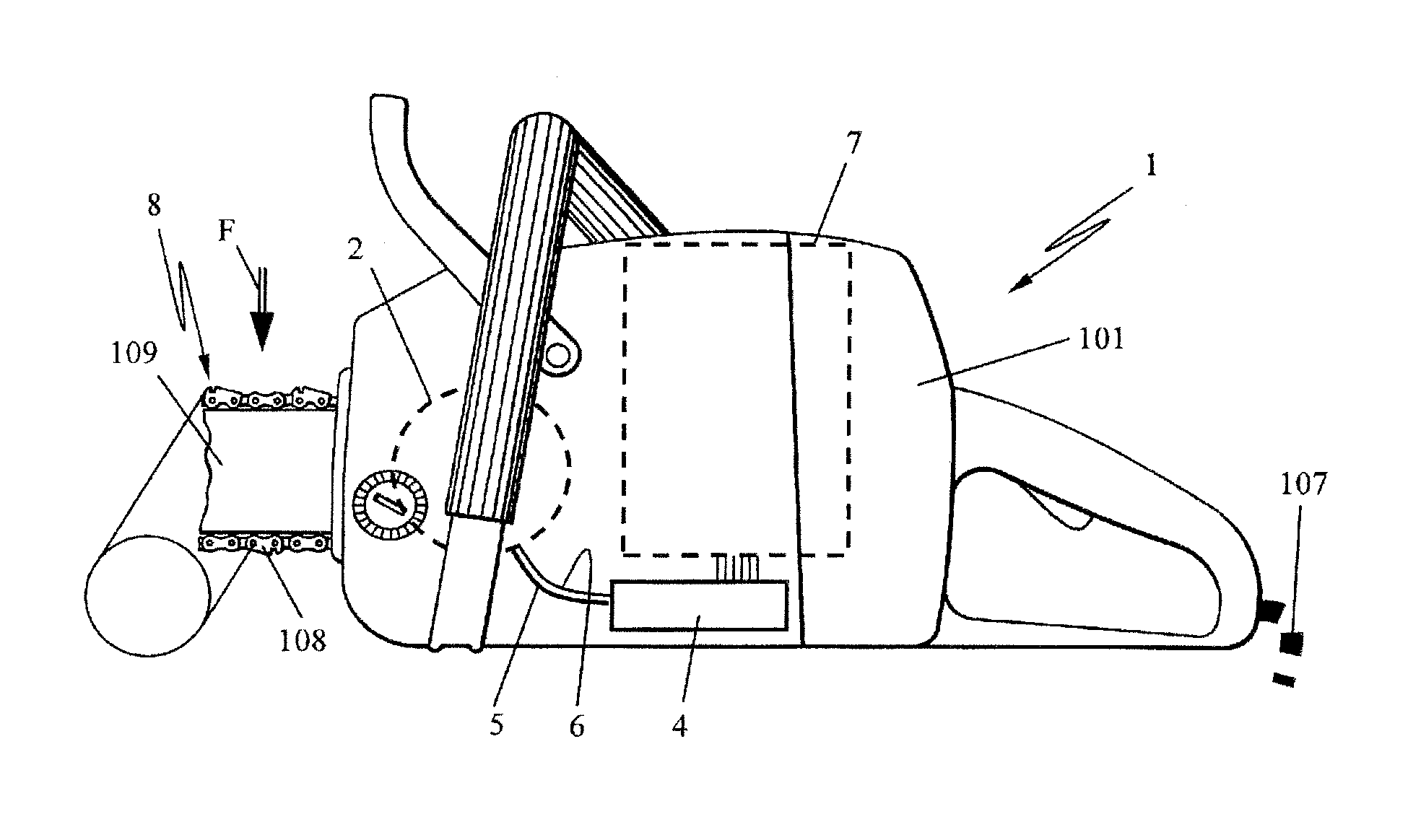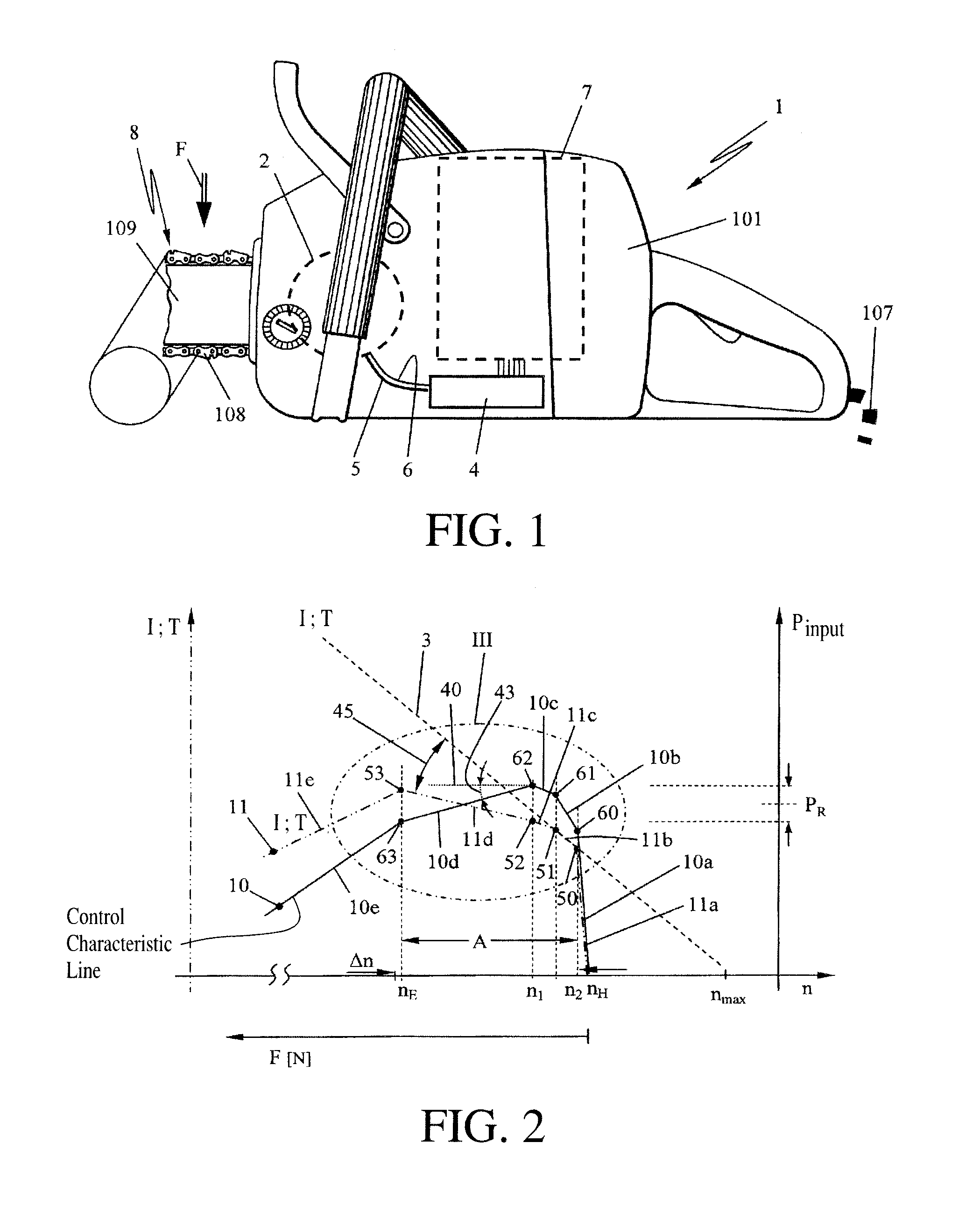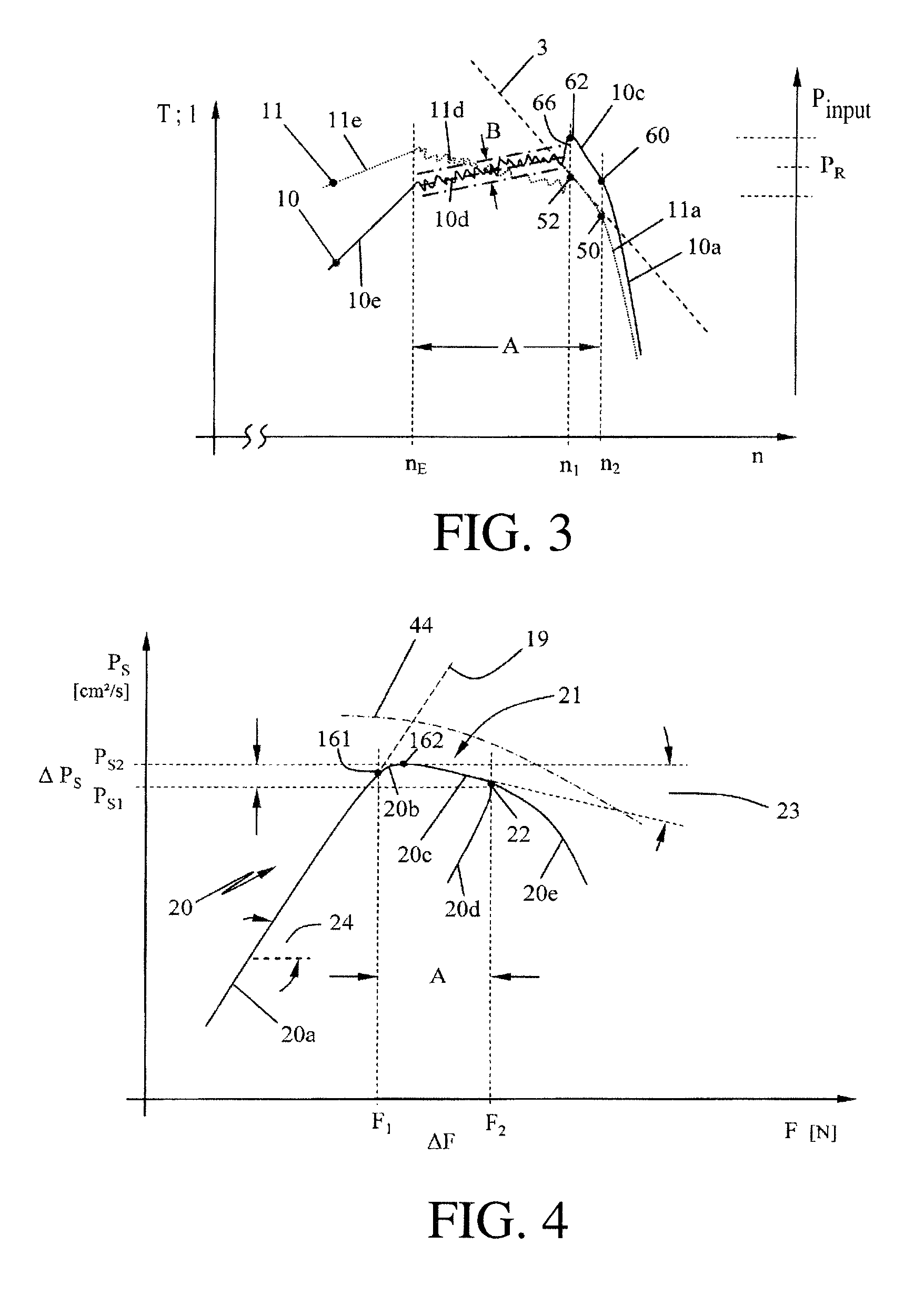Work apparatus having an electric drive motor
a technology of electric drive motor and work apparatus, which is applied in the direction of electric controller, dynamo-electric converter control, instruments, etc., can solve the problems of difficulty for the operator to start and hold a suitable working area, and achieve the effect of simple manner and good efficiency
- Summary
- Abstract
- Description
- Claims
- Application Information
AI Technical Summary
Benefits of technology
Problems solved by technology
Method used
Image
Examples
Embodiment Construction
[0027]The invention generally relates to an electric, handheld work apparatus 1 having a driven work tool 8. In FIG. 1, a chain saw 101 is shown as an example of such a work apparatus 1 whose electric drive motor 2 drives the work tool 8—in the embodiment a saw chain 108—with a motor-specific characteristic line 3 (FIG. 2) of the consumed engine current I over the rotational speed n. This motor-specific characteristic line 3 at the same time approximately represents the characteristic course of the torque T outputted by the electric motor 2 over the rotational speed n. Thereby, at maximum idling rotational speed nmax the torque T at the output shaft approaches zero, while the current I drops to an assigned idling current. Hereafter, the characteristic line 3 is to approximately represent the motor current I over the rotational speed n as well as the torque T over the rotational speed n. In the embodiment, the characteristic line 3 is shown essentially linearly; other characteristic ...
PUM
 Login to View More
Login to View More Abstract
Description
Claims
Application Information
 Login to View More
Login to View More - R&D
- Intellectual Property
- Life Sciences
- Materials
- Tech Scout
- Unparalleled Data Quality
- Higher Quality Content
- 60% Fewer Hallucinations
Browse by: Latest US Patents, China's latest patents, Technical Efficacy Thesaurus, Application Domain, Technology Topic, Popular Technical Reports.
© 2025 PatSnap. All rights reserved.Legal|Privacy policy|Modern Slavery Act Transparency Statement|Sitemap|About US| Contact US: help@patsnap.com



